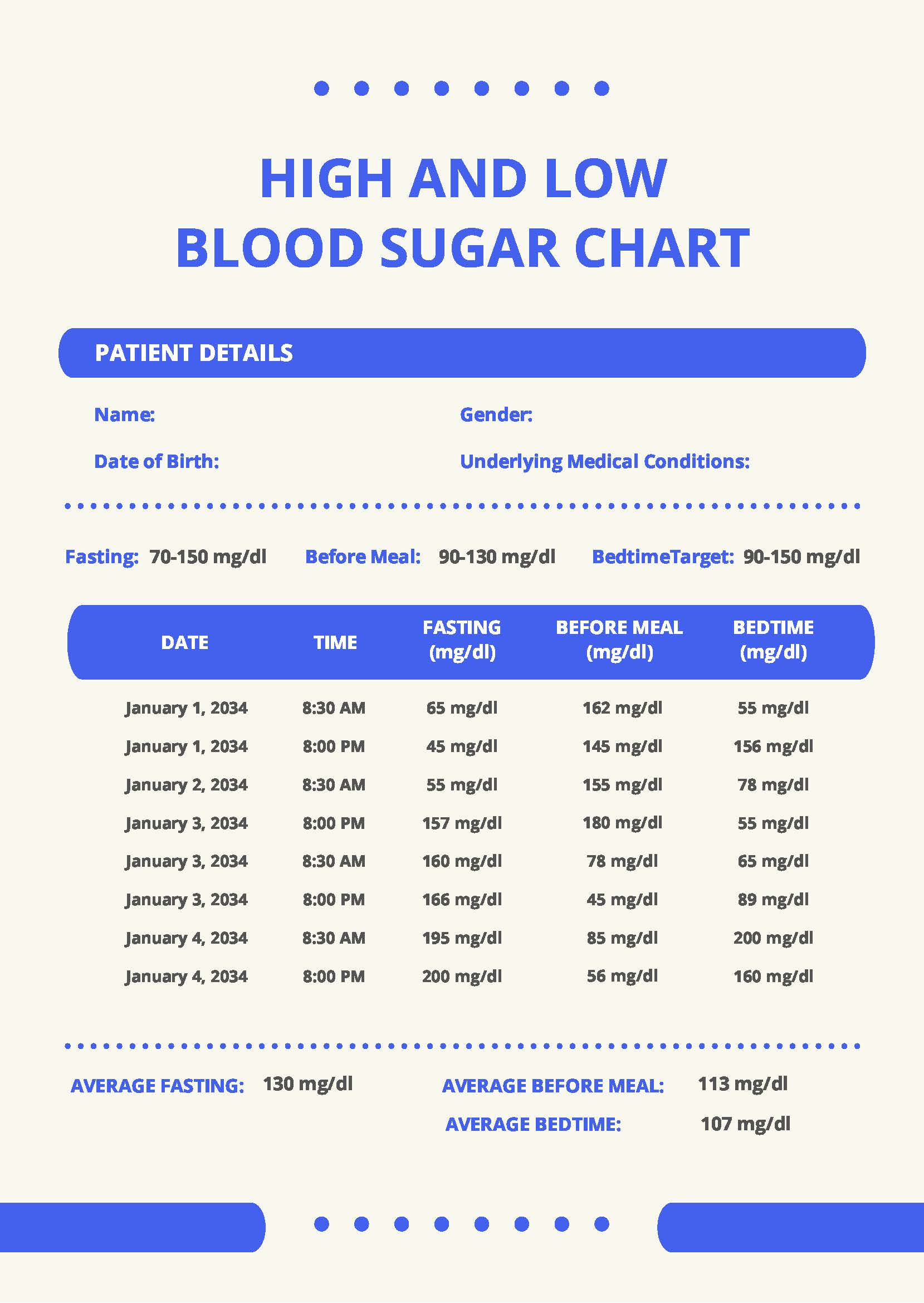A blood sugar level of 156 mg/dL is considered high, especially if measured fasting. It indicates potential diabetes or prediabetes.
Managing blood sugar is crucial for overall health. High blood sugar levels can lead to serious complications over time, including heart disease and nerve damage. Monitoring blood sugar regularly helps detect any issues early. Lifestyle changes, such as a balanced diet and regular exercise, play a significant role in maintaining healthy blood sugar levels.
Consulting healthcare professionals for personalized advice is essential. Understanding what constitutes high blood sugar and its implications can empower individuals to make informed decisions about their health. Stay proactive in managing blood sugar levels to ensure a healthier life.
Credit: www.quora.com
Introduction To Blood Sugar Levels
Understanding blood sugar levels is crucial for maintaining good health. Blood sugar, or glucose, is the main sugar found in your blood. It comes from the food you eat and is your body’s main source of energy.
What Blood Sugar Means
Blood sugar levels indicate the amount of glucose in your blood. The levels can be low, normal, or high. Normal blood sugar levels are essential for proper body functioning. A blood sugar level of 156 mg/dL is considered high.
Importance Of Monitoring Glucose
Monitoring glucose levels helps you manage your health effectively. It can help identify potential health issues early on. Regular monitoring can prevent complications associated with high blood sugar.
| Blood Sugar Level | Category |
|---|---|
| 70-99 mg/dL | Normal |
| 100-125 mg/dL | Prediabetes |
| 126 mg/dL and above | Diabetes |
- Regular checks can help you stay healthy.
- It is important to know your blood sugar levels.
- High levels can cause serious health issues.
Regular monitoring and a healthy lifestyle can help maintain normal blood sugar levels. Eat balanced meals, exercise regularly, and consult with healthcare providers. This can help you keep your blood sugar levels in check.
Understanding 156 Blood Sugar
Understanding blood sugar levels is crucial for diabetes management. A blood sugar level of 156 mg/dL might cause concern. To grasp its significance, we need to delve deeper.
Interpreting The Number
A blood sugar reading of 156 mg/dL can provide insights into your health. Blood sugar levels fluctuate throughout the day. The timing of the test influences the reading.
If you measure blood sugar two hours after eating, it’s a postprandial test. A reading of 156 mg/dL in this context might be somewhat high. For fasting blood sugar tests, a level of 156 mg/dL is more concerning.
Comparing To Normal Ranges
Normal blood sugar levels vary based on the type of test:
| Test Type | Normal Range (mg/dL) |
|---|---|
| Fasting | 70-99 |
| Postprandial (2 hours after eating) | Less than 140 |
Comparing these ranges helps determine if 156 mg/dL is high. For a fasting test, 156 mg/dL exceeds the normal range. For a postprandial test, it’s slightly above the ideal range.
Here are some quick points to remember:
- Fasting blood sugar of 156 mg/dL is high.
- Postprandial blood sugar of 156 mg/dL is mildly elevated.
Monitoring and managing blood sugar levels is essential. Always consult a healthcare provider for accurate diagnosis and advice.
Factors Affecting Blood Sugar
Understanding the factors that affect blood sugar is vital. Blood sugar levels can fluctuate based on several variables. These factors can either spike or lower blood sugar. Knowing these can help manage and maintain optimal levels.
Dietary Influences
Your diet plays a crucial role in blood sugar levels. Carbohydrates have the most significant effect. Eating too many carbs can cause spikes. Sugary foods and drinks can also raise blood sugar quickly.
Fiber-rich foods help manage blood sugar. They slow down sugar absorption. Protein and healthy fats also have a stabilizing effect. Consuming balanced meals is essential.
| Food Type | Impact on Blood Sugar |
|---|---|
| High-carb foods | Increase |
| Sugary snacks | Increase |
| Fiber-rich foods | Stabilize |
| Protein | Stabilize |
| Healthy fats | Stabilize |
Impact Of Exercise
Exercise significantly impacts blood sugar levels. Physical activity helps cells use sugar for energy. This process lowers blood sugar levels. Regular exercise can improve insulin sensitivity. This means your body uses insulin more effectively.
Different types of exercise have varied effects. Aerobic exercises like walking or running have immediate benefits. They lower blood sugar during and after the activity. Strength training also helps. It builds muscle, which uses more glucose.
- Aerobic Exercise: Walk, run, swim. Lowers blood sugar immediately.
- Strength Training: Lifting weights. Builds muscle, uses more glucose.
- Flexibility Exercises: Stretching. Indirectly beneficial for overall health.
Consistency is key. Regular activity keeps blood sugar stable.

Credit: www.amazon.com
Risks Of Elevated Blood Sugar
Understanding the risks of elevated blood sugar is vital for your health. A blood sugar level of 156 mg/dL is considered high. Elevated blood sugar can cause various health issues. These issues range from short-term effects to long-term complications.
Short-term Health Effects
High blood sugar can cause immediate issues. Some of these include:
- Increased thirst
- Frequent urination
- Fatigue
- Blurred vision
These symptoms can disrupt daily activities. They make it hard to focus and function properly. Immediate management is important.
Long-term Complications
Prolonged high blood sugar can lead to serious complications. These complications include:
- Heart disease
- Kidney damage
- Nerve damage
- Vision problems
These issues can severely affect your quality of life. Here is a table summarizing the complications:
| Complication | Description |
|---|---|
| Heart Disease | High blood sugar increases heart disease risk. |
| Kidney Damage | Can lead to kidney failure over time. |
| Nerve Damage | Causes pain and numbness in extremities. |
| Vision Problems | May result in blindness if untreated. |
Understanding these risks can help manage blood sugar levels effectively. Monitoring and controlling blood sugar can prevent these severe complications.
Managing High Blood Sugar
Managing high blood sugar is essential for maintaining good health. If your blood sugar is 156, it is slightly higher than normal. Taking proactive steps can help bring it down.
Lifestyle Changes
Adjusting your daily habits can significantly affect your blood sugar levels. Here are some effective lifestyle changes:
- Eat a balanced diet: Include fruits, vegetables, and whole grains.
- Exercise regularly: Aim for at least 30 minutes of activity.
- Stay hydrated: Drink plenty of water throughout the day.
- Monitor your sugar intake: Avoid sugary snacks and drinks.
- Get enough sleep: Aim for 7-8 hours of sleep each night.
Medical Interventions
Sometimes, lifestyle changes alone are not enough to manage high blood sugar. Medical interventions can also be necessary:
- Medications: Your doctor may prescribe oral medications or insulin.
- Regular check-ups: Frequent monitoring can help track your progress.
- Consult a dietitian: A dietitian can create a personalized meal plan.
- Blood sugar monitoring: Use a glucometer to check your levels at home.
Making these changes can help bring your blood sugar to a healthier range. Stay proactive and consult healthcare professionals for advice.

Credit: www.template.net
Prevention Strategies
Maintaining a blood sugar level of 156 can be alarming. It’s crucial to adopt effective prevention strategies. These strategies can help manage and lower blood sugar levels. Let’s delve into some actionable steps.
Dietary Adjustments
Proper diet is key to managing blood sugar levels. Focus on consuming foods with a low glycemic index (GI). These foods release glucose slowly, preventing spikes in blood sugar.
- Whole grains like oats, barley, and quinoa
- Fruits such as apples, berries, and oranges
- Vegetables like broccoli, spinach, and carrots
Avoid sugary drinks and high-carb snacks. Opt for water, herbal teas, and healthy fats instead.
Here’s a quick table summarizing good and bad food choices:
| Good Choices | Bad Choices |
|---|---|
| Whole grains | White bread |
| Fresh fruits | Sugary snacks |
| Lean proteins | Fried foods |
Regular Physical Activity
Engage in regular physical activity to help manage blood sugar levels. Exercise helps your body use insulin more effectively.
- Walking for 30 minutes daily
- Cycling at a moderate pace
- Swimming to improve cardiovascular health
Strength training twice a week can also be beneficial. It helps build muscle, which improves glucose uptake.
Remember to stay consistent with your exercise routine. Consistency is key to long-term blood sugar management.
When To See A Doctor
Monitoring blood sugar is vital for managing diabetes. A reading of 156 can be concerning. Knowing when to see a doctor is crucial for your health.
Warning Signs
Recognize the warning signs of high blood sugar. Symptoms include:
- Frequent urination
- Increased thirst
- Blurry vision
- Fatigue
- Headaches
If you experience these symptoms, consult a doctor immediately.
Regular Check-ups
Regular check-ups are essential for managing diabetes. Schedule appointments every three to six months.
During check-ups, your doctor will:
- Check your blood sugar levels
- Review your medications
- Discuss your diet and exercise
- Monitor for complications
Regular visits help keep your blood sugar in check and prevent complications.
| Symptom | Action |
|---|---|
| Frequent urination | See a doctor |
| Increased thirst | See a doctor |
| Blurry vision | See a doctor |
| Fatigue | See a doctor |
| Headaches | See a doctor |
Remember, managing your blood sugar is key. Regular check-ups and paying attention to warning signs can help you stay healthy.
Frequently Asked Questions
What Does A 156 Blood Sugar Mean?
A blood sugar level of 156 mg/dL is above normal. It could indicate prediabetes or diabetes. Consult your doctor for further evaluation and advice.
How Bad Is 155 Blood Sugar Level?
A blood sugar level of 155 mg/dL is considered high. It may indicate prediabetes or diabetes. Consult your doctor for advice.
What Is A1c If Glucose Is 156?
An A1C level of 6. 9% typically corresponds to an average glucose level of 156 mg/dL. This helps monitor diabetes.
Should I Worry If My Blood Sugar Is 150?
A blood sugar level of 150 mg/dL can be concerning. Monitor your levels and consult your doctor for advice.
What Is Considered A High Blood Sugar Level?
A blood sugar level of 156 mg/dL is high.
Is 156 Blood Sugar Level Dangerous?
It can be a concern. Consult your doctor.
Can 156 Blood Sugar Cause Symptoms?
Yes, it can cause symptoms like thirst and fatigue.
How To Lower Blood Sugar Of 156?
Exercise and a healthy diet can help lower blood sugar.
Conclusion
Managing blood sugar levels is crucial for overall health. A reading of 156 may indicate prediabetes or diabetes. Consult your doctor for personalized advice. Regular monitoring, healthy eating, and exercise can help maintain optimal levels. Stay informed and proactive about your health to ensure a better quality of life.





Leave a Reply